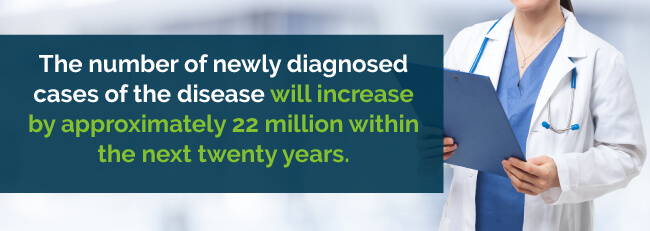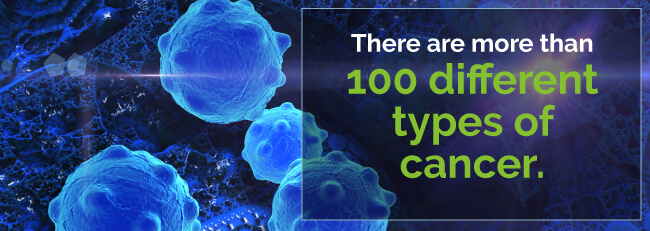
Cancer has touched the lives of almost every person living in the U.S. today. When you find out you have cancer, it’s an incredible shock to your system. Thankfully, there are new treatments and ways of managing the disease coming out on a regular basis. If you’re struggling with cancer treatment or you know someone who is, it’s likely that you’ve wondered about taking medical cannabis for cancer to ease your symptoms. Below, we’ll outline what you’ll need to know about developing a potential marijuana treatment plan as a cancer patient.

Marijuana is the name for the dried leaves and buds of the Cannabis sativa plant. Alternative names for the substance are ganja, marihuana, hemp, weed, hash, grass, pot and more. The plant has been used in herbal remedies for centuries. Marijuana has biologically active cannabinoids, many of which have a therapeutic effect on your body. Scientists have identified tetrahydrocannabinol (THC) and cannabidiol (CBD) in particular. In fact, Dronabinol, a pharmaceutical form of THC and a manmade cannabinoid medication, and Nabilone have both been approved by the FDA for the treatment of some conditions.
Find A Doctor Find A Dispensary
In Canada, Nabiximols/Sativex, which contains both THC and CBD, is approved for the relief of pain in people with multiple sclerosis and advanced cancer.
The active cannabinoids in the plant mimic your internal endocannabinoid system (ECS). Your body’s endocannabinoids are responsible for keeping your critical biological functions — for example, pain, immune system, appetite and sleep — in balance. When your body is out of balance and in a state of stress, your endocannabinoids work to correct this imbalance. The endocannabinoids in the plant enable your body to restore its sense of balance, which is one of the reasons cannabis works so well for you if you have cancer.

Cannabinoids are known to have neuroprotective and analgesic, or pain-relief, effects. Many researchers have focused on THC in the past several decades of studies of marijuana and cancer-related ailments.
However, many medical marijuana patients and physicians believe that the purified form of THC or its synthetic counterparts are not as effective as orally consuming foods, referred to as edibles, or liquids, called tinctures, made with cannabis, or the smoking of the buds on the marijuana plant. It is possible that the marijuana plant’s multitude of different natural cannabinoids provides an increased therapeutic effect as opposed to a single synthetic cannabinoid.
Cannabinoids have also been researched for their possible use in cancer prevention and cancer treatment. Cancer is most notably defined by the multiplication of mutated somatic cells in the body. The mutated cells have damaged DNA that was not copied correctly during cell division. Cancer cells multiply more rapidly than normal cells and often have altered functions due to the cells’ mutated genetic code.
Cannabinoids have been proven to stimulate the apoptotic pathway in cells, which is the programmed death of a cell that has acknowledged that it is no longer functioning efficiently. In this way, marijuana can actively prevent tumor growth by signaling cancerous cells to “commit suicide.” Also, the cannabinoid receptors arrest the Growth 1, or G1, phase of the cell cycle. This ultimately prevents the cancer cell from maturing any further, which would inhibit the number of harmful toxins created by the cancer cell.
The cannabinoid receptors also prevent inflammation in other parts of the body as an effect of the marijuana use with certain cancer patients suffering from inflammation. These were some of the first implications that suggested the cannabinoid receptors activated by marijuana and cancer could help prevent cancer cell inflammation and nerve pain associated with inflammatory response in cells.
As there are many different types of cancer, indicators often vary. Here, we look at some of the most common symptoms. Keep in mind that having any of these symptoms or signs does not mean you necessarily have the disease. Many other illnesses and conditions can cause these issues, too. If you’re at all worried about any of the following, please get in touch with your doctor.
Symptoms of cancer may include:
While cannabis may not alleviate all of the symptoms provoked by cancer, many patients find that the substance helps enhance their general sense of wellbeing.
The THC in marijuana is useful for relieving nausea and cancer pain and reducing inflammation. CBD helps to reduce anxiety and can help treat seizures. Cannabichromene (CBC) can also lower inflammation and relieve pain. The National Cancer Institute states that marijuana can also:
Medical pot is also suitable for treating nausea and vomiting that’s related to some types of chemotherapy. Furthermore, it can be sleep inducing, so your body can try to repair itself while you rest.
Now that you know about some of the positive effects medical cannabis can have, you may be wondering what to do next. First, find out if your state has marijuana laws related to cancer.
To date, many states have medical marijuana laws that include cancer as a qualifying condition. These states are:
State laws on the use of medical marijuana are continuously being passed. You can be added to our medical marijuana for cancer wait list if your state has yet to quality medical cannabis for cancer.
The way cannabis affects you is dependent on how it enters your body. There are several options, including:
No matter how you take medical pot, taking too much of a strain that’s high in THC can sometimes cause you to feel high. These symptoms should wear off quickly. Please note that your preferred method of intake may vary and it’s ideal to discuss your treatment options with a physician before visiting a dispensary to purchase your medical supply.
If you live in a state where medical cannabis is legalized, the drug can significantly help manage your cancer symptoms. Different strains of cannabis are better for treating certain symptoms. Here, we look at some strains of marijuana that have helped cancer patients.
Every strain has its unique properties, and what might work for one person may not be right for you. Generally, some marijuana strains — sativa strains — are known to be euphoric or uplifting, while others — indica strains — are better-known for their sedative and calming effects.

Marijuana strains that are high in both CBD and THC tend to work in synergy to effectively relieve cancer pain. That being said, types that are high in either of these cannabinoids may also work for you. You may need to try out a few strains and dosages until you hit on the right one for your needs.
Marijuana strains that help relieve pain include:
Fatigue-reducing strains include:
Strains that help reduce depression include:
Appetite-stimulating strains include:
The following strains help prevent nausea:
As all cancers are different, some can be treated fairly rapidly, whereas others take time and cause discomfort. Cancer not only affects you as an individual, but it also reaches your family and friends, too. It’s crucial to have the best quality of life you possibly can while you’re fighting the disease. Gentle and effective treatments, like marijuana, can contribute to a better quality of life.
Medical marijuana generally causes little to no adverse effects in patients. However, if you enroll in a cannabis treatment plan and begin to notice unwanted symptoms, connect with a trained medical professional for further assistance.
The Center for Medical Cannabis Research, an organization sanctioned by state and federal oversight committees, conducts research on the possible medical applications for marijuana.
A recent double-blind controlled study of smoked placebo versus smoked marijuana in patients with cancer-derived chronic peripheral neuropathic pain found that 10 of the 16 patients they studied experienced a 30 percent reduction in pain after seven days of smoking cannabis. The study used a capsaicin-based pain model, meaning that the pain felt from the subjects was due to heat or a burning sensation. The study not only produced invaluable data on marijuana and cancer-induced pain, but it also paved a road to examining other ways in which cannabis can be used for analgesic effects.
The potential medical applications of the cannabinoid-1 (CB1) and cannabinoid-2 (CB2) receptors are growing exponentially, and the appeal of using something natural over synthetic pharmaceuticals is becoming more desirable by society. The endocannabinoid system is essential to the life and death cycle of cells, proving a link between marijuana and cancer’s central operating mechanism.
There are also endogenous, or human, forms of cannabinoids known as the endocannabinoids, which occur naturally in the brain and are responsible for activating the CB1 and CB2 receptors. These are a group of G-coupled protein receptors located within the lipid membrane of cells found all over the body. Phytocannabinoids, which are the natural cannabinoids found exclusively in the resin-filled trichomes of the marijuana plant, activate these receptors.
Because there is such a strong link between cancer management and cannabis, it’s vital for the millions of people living with this condition to consider exploring a medical marijuana plan whenever necessary. According to information from the National Cancer Institute:

Cancer patients who benefit from the smoking of marijuana should not be denied the right to protect their life. The use of marijuana to treat cancer is a medical issue, to be discussed between a qualified doctor and their patient, not a legal one.
Cancer refers to a large group of diseases that represent some of the most prevailing causes of death in the world. Many people are touched by cancer — whether they experience this illness first-hand or have a loved one with cancer. Fortunately, there are various ways to minimize the impact of these diseases.
Everyone has heard the word, but do you know what this disease is? Cancer begins in the building blocks of your body – your cells. In a healthy individual, your body creates new cells when you need them, replacing old ones that have died off. In a person with cancer, this process goes wrong. Even when your body doesn’t need them, new cells grow and old ones continue to live when they shouldn’t.
These extra cells can create a mass that is known as a tumor. Tumors can be benign — non-cancerous — or malignant — cancerous. When you have a malignant tumor, its cells can invade your healthy tissue nearby and can sometimes break away and spread to other areas of your body.
Cancer is a general term frequently used to indicate any of various types of malignant neoplasms, most of which invade surrounding tissues, may metastasize to several sites and are likely to recur after attempted removal and to kill the patient unless adequately treated.
When we speak of cancer, we aren’t simply talking about one disease, but many. In fact, there are more than 100 different types of cancer, and each type has its own set of characteristics. The majority of cancers are named after where they begin, even if they have spread from the primary site. For example, cancer that starts in the lungs is called lung cancer. Cancer that started in the breasts but spread to the lungs is called metastatic breast cancer.
When cancer spreads to a different area of your body, this is known as metastasis. The treatment you receive and symptoms you present with depend both on the type of cancer you have and how advanced the illness is.
Although research is promising, so far it’s been limited to “preclinical” studies, which involve testing treatments or drugs in animals before they are used on humans. This preclinical research is offering hope to many cancer patients, but a great deal more is needed. More rigorous studies must be conducted.
For that to happen, the federal government will have to loosen the restrictions on medical marijuana research. Even though the National Cancer Institute — a program that runs on federal funds — has acknowledged that cannabis has shown the ability to kill cancer cells, the government still refuses to help researchers conduct more extensive studies into how marijuana may be able to help people fighting the disease.
However, studies spanning more than three decades show that medical marijuana is an effective treatment for symptoms of cancer as well as the side effects of chemotherapy and radiation therapy. THC — the main chemical component in marijuana — is a natural antiemetic, which has been shown to help decrease the pain associated with many types of cancer and chemotherapy agents. THC can also help battle chemotherapy-induced nausea and vomiting (CINV).
What’s more, recent research has shown that medical marijuana has cancer-fighting properties. According to more than 18 major studies published between 2001 and 2003, cannabinoids have a significant effect fighting cancer cells and have also been shown to exhibit anti-tumor properties.
Here, we’ll look at what cancer is, how medical marijuana for cancer is an effective treatment, the best strains to use and much more
The human body is composed of millions of cells that vary in size, shape and function. Cells are the building blocks of all the different tissues within the body. In healthy tissues, new cells are created during cell division – a process called mitosis. When cells become old they self-destruct and die – a process call apoptosis. A delicate balance must exist between the rate of which new cells are created and the rate at which old cells die. Cancer develops when the balance is disrupted and cells grow out of control. This disruption can result from uncontrolled cell growth or loss of a cell’s abilities to self-destruct resulting in a mass of cells, or a tumor. A benign, or noncancerous, tumor is the erratic growth of normal appearing cells. These cells are contained at the original site of growth. However, malignant cancerous cells can migrate, or metastasize, to another part of the body via the circulatory or lymphatic systems and form new tumors at these locations. Cancers are named after the site where the cancer began, which is referred to as the primary site. If lung cancer spreads to the brain, the brain tumor is considered metastatic lung cancer, not brain cancer. The brain tumor is considered the secondary site. Learn more below about how medical marijuana can help treat cancer.
Millions of Americans are afflicted with cancer, the nation’s second-leading cause of death. There are more than 100 types of cancer, including breast cancer, skin cancer, lung cancer, colon cancer, prostate cancer and lymphoma.

To learn more about treating specific types of cancer, click on the links below:
Cancer comes in a variety of forms and refers to a group of diseases that are defined by abnormal cell growth. Cancer occurs when mutations to the DNA within a patient’s cells performs irregularly. Cancerous cells can grow anywhere in the body and can lead to more severe complications.
What causes these genetic mutations to occur in the first place? There are two primary reasons for this irregularity — genetics and post-birth occurrences. Some individuals inherit genetic mutations that may make them more prone to cancer. Others enhance their risk for cancer due to external factors that impact their genes after birth. Some factors which influence genetic mutations include smoking, hormones, diet and exercise, sun exposure and infections.
You may think of cancer as a modern-day illness. However, the earliest evidence of the disease is found in the fossilized tumors of ancient Egyptian mummies. The name “cancer” was not used in those times. There are texts dating back to approximately 3000 B.C. that describe the disease. Edwin Smith Papyrus indicates that although there was no known treatment for cancer in ancient Egypt, at least eight ulcers or tumors of the breast were treated by cauterization.
Hippocrates (460-370 B.C.), known as the “Father of Medicine,” was the first person to use the word carcinos to describe non-ulcer forming and carcinoma to name ulcer-forming tumors. The ancient Greek physician used these words as in Greek they mean “crab.” He called them this due to the projections that spread out from cancer, in a similar shape to a crab.
Regarding treatment, cancer surgeries became widespread in the 19th and early 20th centuries, coming after the development of anesthesia, with other treatments including radiation therapy, chemotherapy, immunotherapy and hormone therapy. Now, of course, medical marijuana is being used in the treatment of cancer.
There are several intensive treatments for cancer, with three of the most common being surgery, radiation therapy and chemotherapy, which are often harsh and cause severe side effects. Here is some additional information on each of these three most common types of treatments.
Surgery is one of the oldest forms of cancer treatment. Not only is it used to remove cancerous tumors and tissue, but it’s also used to diagnose the disease and determine how far it may have spread. All medical procedures have risks, of course, but the risks with surgery can be particularly high.
Complications could arise from the surgery and the types of medications used. The more invasive the procedure, the higher the risk. Side effects include tissue damage, reactions to drugs, blood clots, bleeding, severe pain, infections and several others.
Radiation therapy uses waves or particles of concentrated energy to either damage cancer cells or destroy them completely. It is also a common method of treating the disease and has potentially severe side effects. Fatigue is one of the most common side effects, as is hair loss. Some patients lose the hair on their head, as well as eyebrows and eyelashes. The loss can be permanent. In some instances, when hair returns, it is either a different texture than before or substantially thinner
Chemotherapy drugs are designed to kill fast-growing cancer cells. Unfortunately, because the drugs travel throughout the body, they often damage healthy, normal cells as well. Bone marrow cells that play an important role in forming blood, hair follicles and cells in the digestive tract, reproductive system and mouth are among those most commonly affected. Chemotherapy drugs can also lead to problems affecting the immune system, nervous system, kidneys, lungs, bladder and heart
Debilitating side effects such as decreased appetite and nausea often accompany the treatment. People under harsh chemotherapy treatments often suffer from malnutrition. The cannabinoid receptors in marijuana have been shown to be effective in preventing nausea induced by anti-cancer treatments and in stimulating appetite. Cancer patients can thus smoke marijuana to prevent nausea and stimulate appetite and avoid the wasting-away that many suffer from.
Besides surgery, radiation therapy and chemotherapy, there are other methods to treat cancer, which are listed in the table below. The treatment you’ll receive depends on the type of cancer you have and how advanced it is.
|
Treatment |
Potential Side Effect |
|
Immunotherapy |
Pain, flu-like symptoms, rashes, itchiness, weight gain and more |
|
Targeted therapy |
Liver problems, diarrhea, blood clotting and wound-healing problems, fatigue, skin problems and more |
|
Stem cell transplant |
Bleeding, increased infection risk |
|
Hormone therapy |
Hormonal side effects |
|
Medical marijuana |
Drowsiness, dry mouth, giddiness, increased appetite, hunger, thirst, red eyes, insomnia, respiratory issues, uneasiness, anxiety, short-term memory loss |
If you’re looking to find relief from symptoms of cancer or side effects of cancer treatments with medical marijuana, MarijuanaDoctors.com can help.
Book an appointment with a local, qualified physician through MarijuanaDoctors.com today. If you or someone you love has cancer, and you’re interested in finding out more about what strains could work, take that first step and search for a marijuana doctor or dispensary today. Let us help improve your quality of life!
Find A Doctor Find A Dispensary


Please allow us to access your location to find local dispensaries.
VIEW ALL DISPENSARIES ➔